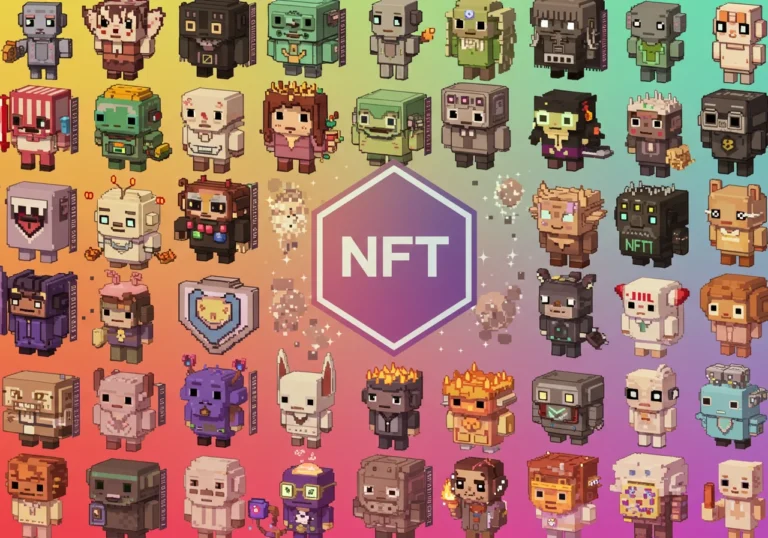Verify Crypto Project Legitimacy: A Step-by-Step Guide
Hey. Let’s be real for a second. Ever had a buddy pitch you something that sounded way too good? Maybe an “amazing” deal or a “sure thing” investment? That little voice in your head probably piped up, right? “Hold up… is this actually legit?”

Listen to that voice. Seriously. In the wild world of crypto, that gut feeling is pure gold. It’s crazy easy to get dazzled by flashy websites and big promises. I know! New tech, weird terms – it can feel like a whole other language sometimes. But here’s the deal: your cash? The stuff you worked for? It deserves protection. That’s where understanding Crypto Project Legitimacy becomes your secret weapon. It’s not about being paranoid. It’s about being smart. Playing it safe.
Crypto Project Legitimacy isn’t just some fancy phrase. It’s the bedrock of trust online. Think of it like kicking the tires and checking under the hood before you buy a used car. You wouldn’t hand over your cash for a clunker that might conk out next week, would you? Same goes for where you park your hard-earned money in crypto.
Why Bother Checking? It’s Your Money!

Crypto moves fast. Like, really fast. New projects show up every day, shouting about changing the game. Some genuinely will! Others? Poof. Gone overnight. Taking people’s money with them. That sick feeling? Yeah, let’s help you dodge that.
Verifying a project is real protects you. It means knowing your cash is backing something solid, something built to last – not just a shiny trap. It lets you sleep at night. When you get the hang of how to verify crypto project legitimacy, you take the wheel. You move from crossing your fingers to feeling confident.
Your Simple Legit-Checker Toolkit
Okay, let’s get down to brass tacks. Checking a project isn’t rocket science. You don’t need a fancy degree. It’s about asking simple, straight-up questions and knowing where to peek. Think of it like meeting a new neighbour. You’d naturally wonder who they are, what they do, and if other folks around trust them, yeah? Same exact idea!
Step 1: Who’s Really Running This Show?
- Names and Faces: This is huge. Real people use real names. If the team is just “CryptoNinja007” or “AnonDev,” that’s a giant red flag waving right there. Actual builders stand behind their work. Google them! Got a LinkedIn? Any history you can find? Real teams have a trail.
- Can You Actually Talk To Them? Look for places like Twitter or Telegram where the team chats openly. Do they answer real questions? Or do they just post hype and vanish when things get tough? Real leaders stick around and talk.
- Picture This: Imagine “CoinCare.” Their site shows “Jamal Patel, CEO – 12 years building secure apps,” with a link to his legit LinkedIn. Good sign! Now imagine “GhostToken.” No real names, just blurry pics and aliases. Run for the hills!
Step 2: What’s This Thing Actually For?
- Is It Useful? Does the project solve a real problem? Something people actually need? Or is it just another coin jumping on the bandwagon? Ask yourself: “Does this make sense? Would anyone actually use this?”
- Keep It Simple: Their website and stuff should explain what they do clearly. Avoid projects drowning in techy mumbo-jumbo but can’t tell you why they exist in plain English.
- Example: “LocalPay” wants to make sending money back home cheaper and faster using blockchain – clear goal, solves a real headache. “LamboCoin” just promises “get rich quick!” with zero explanation of how. Big trouble! Spotting this is key when evaluating the credibility of Crypto Projects.
Step 3: Are They Hiding Something? (Transparency is King!)

Honestly, this might be the biggest one. The importance of transparency in Crypto Project can’t be overstated. It’s like a café with a clean, open kitchen you can see. You trust it more.
- Open Kitchen Code: Can anyone look at their software code? Good projects usually put it on sites like GitHub. Shows they’ve got nothing shady to hide and want others to check their work. If it’s all locked away… why? Makes you wonder.
- Got a Plan? (Roadmap): Do they have a public list showing what they’ve done and what’s next? Does it seem doable? Be wary of fuzzy promises like “Revolutionize Everything by Tuesday!” Real projects have steps.
- Keeping You in the Loop: Do they regularly share updates? Even when things aren’t perfect? Silence is often a really bad sign. Real teams talk, good news or bad. This openness is crucial for building reputation in the Crypto Industry.
- Example: “ClearLedger” posts honest updates every Friday and their code is wide open on GitHub. “SmokeAndMirrors Inc.” hasn’t posted an update in months and their code is secret. Stay away! This is about establishing legitimacy in the Blockchain space.
Step 4: Follow the Money Trail (Tokenomics Made Easy)
“Tokenomics” sounds scary, but it’s just “how the money works here.”
- Where Do the Tokens Come From? How are new ones made? Is a massive chunk just sitting with the founders, ready to be sold immediately? That could mean they dump them and crash the price.
- What’s the Token For? Does it have a real job inside the project? Like paying for services, voting, or getting discounts? Or is it just a way for them to raise cash? Needs a real purpose.
- Who’s Holding the Bag? Check if just a few people (or the founders) own most of the tokens. If so, they can pretty much control the price. Look for a fairer spread.
- Example: “UsefulToken” clearly says 70% of tokens are for people to use in their app, 20% for building new stuff (locked away for 2 years!), 10% sold fairly. “PumpAndDumpCoin”? Founders hold 85%, released now. Avoid like the plague! Understanding this is part of the crypto project legitimacy criteria and standards.
Step 5: What’s the Buzz? (Listen to the Crowd)
- What’s the Word on the Street? Google the project name. Look past their shiny official website and social media. What are people saying on Reddit, Twitter, or crypto forums? Generally positive? Or lots of complaints about delays, broken promises, or getting ghosted by support? Don’t ignore a bunch of grumbling.
- Real Talk Community: Is there an actual community on Discord or Telegram? Is the chat helpful and about the project? Or is it just endless “MOON!!!” spam? Real communities talk tech and progress.
- What Do Others Say? Have any decent crypto news sites or folks who know their stuff talked about this project? What was the vibe? Look for honest opinions, not just ads.
- Example: You find recent, balanced articles about “SolidChain’s” tech, and their Discord has actual conversations and helpful mods. For “HypeMachine,” you only find angry tweets about lost funds and a Telegram full of bots shouting “BUY NOW!” Time to bounce! This is key for ensuring trustworthiness in Crypto Projects.
Danger Signs! Red Flags You Shouldn’t Ignore
Even while running through those steps to assess Crypto Project Legitimacy, watch out for these blaring alarms:
- “Guaranteed” Crazy Profits: “Double your money in a week!” Come on. If it sounds too perfect, it almost always is. Crypto has risk. Promises of zero risk? That’s just not true. Big red flag.
- Pressure Cooker Sales: “Buy RIGHT NOW or miss out!” Urgency is a classic scam trick. Good projects don’t pressure you. They let you decide.
- Vague Vibes or Copied Stuff: Is their main document (the whitepaper) fuzzy, full of fluff, or look weirdly like another project’s? Bad news. Original ideas need original words.
- All Talk, No Walk: Be super careful with projects that have nothing real to show – no working app, no test version – just a huge dream. Evaluating the credibility of Crypto Projects means looking for proof, not just pretty pictures.
- Legal Limbo: If they’re handling real money, do they follow any rules? No clear info about licenses or regulations? That’s risky territory.
Table of Contents
How the Good Guys Build Trust (It Takes Work)
For projects that are real, building reputation in the Crypto Industry and establishing legitimacy in the Blockchain space isn’t luck. It’s grinding. It’s honesty, day after day. It means:
- Actually doing what they said they would (even the small stuff).
- Being brutally open – the good, the bad, and the ugly.
- Really talking to their community, hearing feedback.
- Partnering up with other names you actually recognize and trust.
- Getting checked out by respected security pros (and sharing the report!).
This is how ensuring trustworthiness in Crypto Projects happens. It’s a long haul.
Bottom Line: You’ve Got This.
It’s not about being scared. It’s about being switched on. You’re not just tossing in cash; you’re putting your trust somewhere. Taking a few minutes to check things out? That’s looking out for Future You.
Start small. Pick one project you’re kinda curious about and walk through these points. Check the team page. Google a name or two. Glance at their roadmap. See what folks online are grumbling (or cheering) about. You’ll get a feel for it fast.
The crypto world needs sharp folks like you. Folks who ask “Why?” Folks who care more about what’s real than what’s loud. By focusing on legitimacy, you protect your wallet and help make the whole space better for everyone.
Here’s to making smart moves and backing projects that deserve your support!
Quick Check: Your Legit Project Cheat Sheet
- Real People: Founders use real names, have real backgrounds. Avoid ghosts.
- Clear Purpose: Solves an actual problem simply. Skip the vague hype machines.
- Nothing to Hide: Open code, honest roadmap, regular updates. Secrecy stinks.
- Fair Token Game: Understand how tokens work and who holds them. Watch for founder hoards.
- Listen Up: Check community buzz and independent opinions. Ignore the bot noise.
- Danger Zone: Run from “guaranteed” profits, pressure tactics, vagueness, or no real product.
- Trust is Earned: Good projects prove themselves over time with action and openness.
- You’re in Charge: Doing these checks puts you in control. Protect your cash.

Hello, I’m Edmilson Dias, founder of CoinBringer. I created this platform to guide people through the fast-moving world of cryptocurrency with clarity and safety. With years of research in blockchain and digital security, my goal is to translate complex topics into practical knowledge, offering reliable tutorials, safety insights, and guidance for both newcomers and experienced users.
Discover more from CoinBringer
Subscribe to get the latest posts sent to your email.







